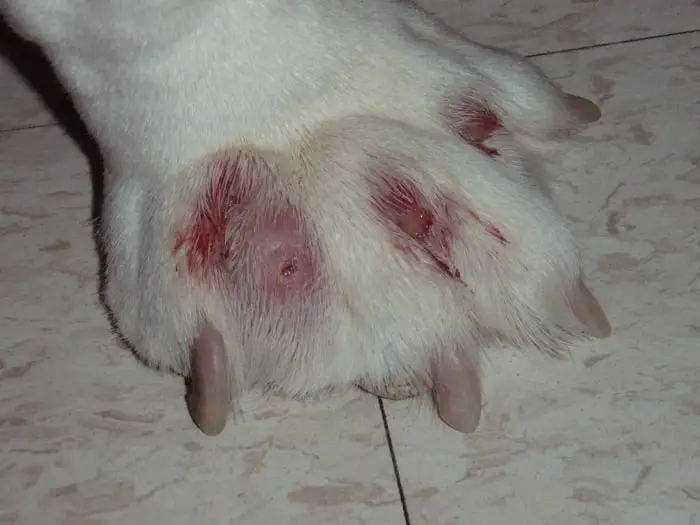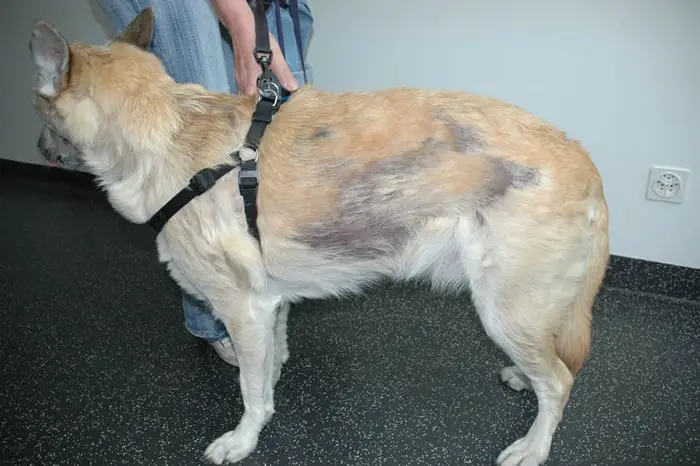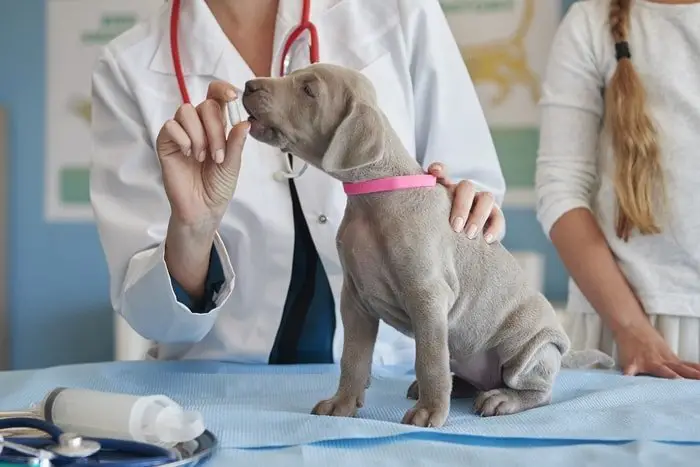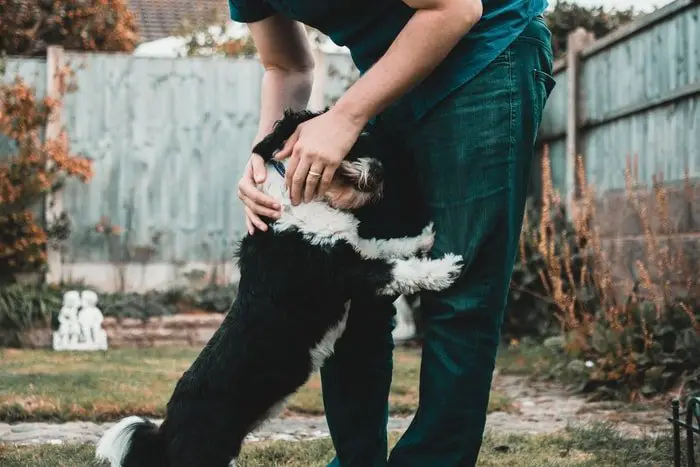Folliculitis is the severe inflammation of one or several hair follicles of dogs characterized by various pathological lesions in the skin and interdigital space. The disease is common in dogs than other mammals. Bacterial folliculitis is a more common skin disease in dogs than in other forms.
Why is Folliculitis Important in Dogs?
Folliculitis is one of the most prevalent skin diseases of dogs. The disease starts from a single inflammation from a hair follicle and, if unnoticed, may lead to severe conditions. As a dog owner, you must know the sequence of the disease to take precautionary measures.

Causes of Dog Folliculitis
The most common causes of canine folliculitis are
- Bacterial acne (Staphylococcus spp).
- Interdigital pododermatitis.
- Skinfold pyoderma
- Acral lick dermatitis
- Callus dermatitis.
- Pyotraumatic folliculitis
- Furunculosis in German Shepherd dogs.
- Hypothyroidism.
- Allergic dermatitis.
- Fungal infections like ringworm and blastomycosis.
- Cushing’s disease in dogs.
- Immunological disorders.
- External parasites like mites, tick, flea, and bites of beasting.

Dog Breeds Specification of Folliculitis
Almost all dog breeds are affected by bacterial folliculitis. There is no breed specified for this disease. The main risk factors of the disease are:
- Hygiene of dog kennel.
- Presence of unhygienic street dog.
- History of an earlier infection.
- Tick or mite infestation leads to folliculitis.
- Lack of grooming and care of dogs.
Clinical Signs of Folliculitis in Dogs
Folliculitis is started with a single inflammation in the hair follicle, making a red blemish that causes itching. The area is filled with fluid and converts into papule and beaks made pustule. The common signs include redness, swelling, itching, and formation of pus. The other signs are:
- Darkening of hyperpigmentation of the skin.
- Circular areas of hair loss around the affected follicle are called epidermal collarettes.
- Oozing from the follicles.
- Severe itching.
- Leads to complete alopecia.

Diagnosis of Canine Folliculitis
The diagnostic procedures of folliculitis are:
- History of ectoparasitic infestation.
- Clinical signs.
- Blood and urine analysis.
- Skin Scraping for mites.
- Wood’s lamp examination for dermatophilosis.
- Identification of bacteria by culture.
- Histopathology and skin biopsy.

Treatment of Folliculitis in Dogs
There are three basic principles of treatment of canine folliculitis; tropical application of medicine, systemic therapy, and prevent the secondary bacterial infection.
- The tropical therapy includes antimicrobial or antifungal shampoo.
- Antibiotic lotion or ointments in the affected area.
- Antifungal ointments.
- Administration of antibiotics parenterally to promote healing.
- Antiallergic cream or injection to reduce itching.
- Non-steroidal anti-inflammatory drugs can be administered to reduce pain and inflammation.

Prevention of Canine Folliculitis
The prevention and control measures depend on the prevention of the underlying causes of folliculitis in dogs. The standard preventive measures are:
- Use ectoparasiticide regularly in the dog kennel and exercise area.
- If the dog is affected by ticks or flea, treat it properly by consultation with a vet.
- Groom your dog daily at least twice.
- Keep clean your dog’s house and kennel.
- You can choose a dog having hypoallergenic quality.
- Keep your dog away from street dogs and wild animals.

Final Advice on Canine Folliculitis
Many infectious and non-infectious agents cause folliculitis in dogs. The condition can be prevented earlier if you take adequate preventive measures. In my article, I have discussed most of the points for your lovely dog. This article will help you to keep your dog healthy and fit for work.